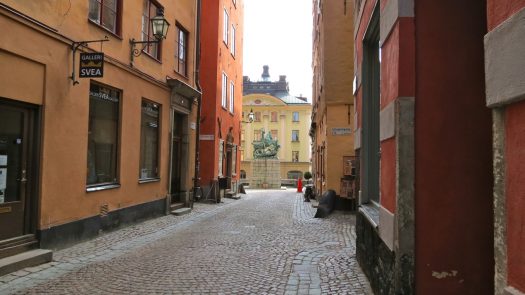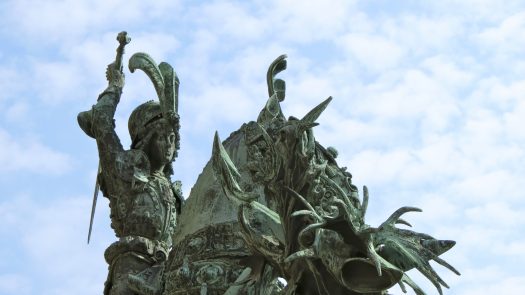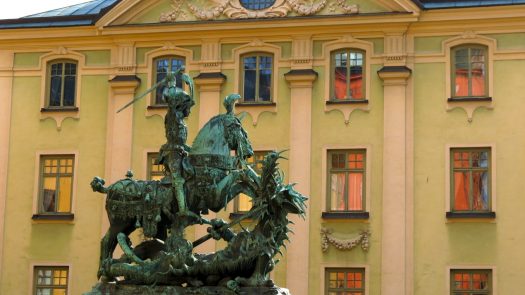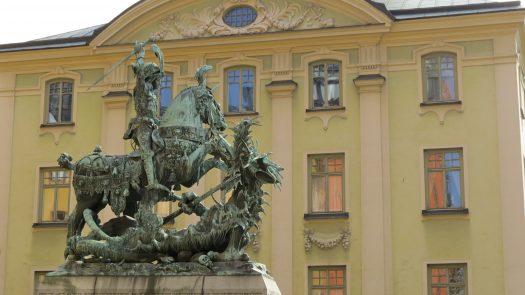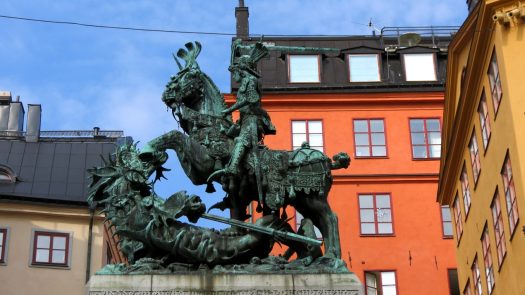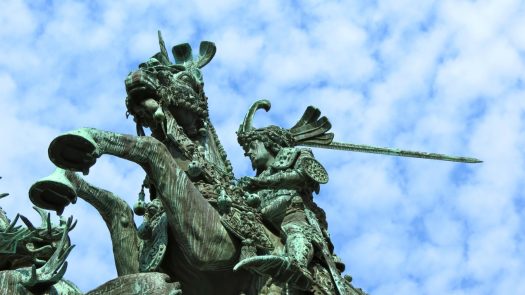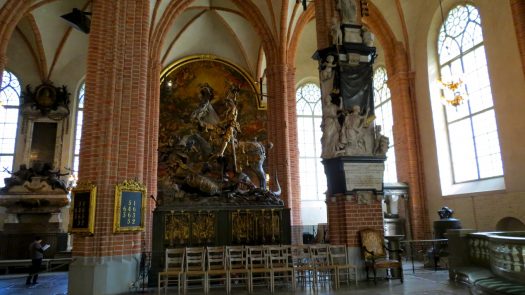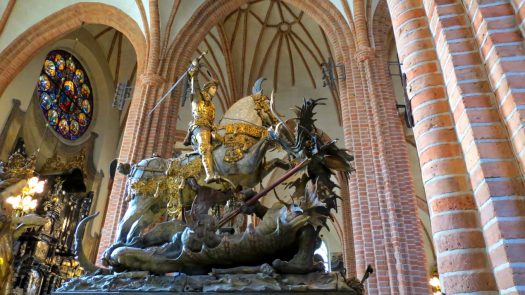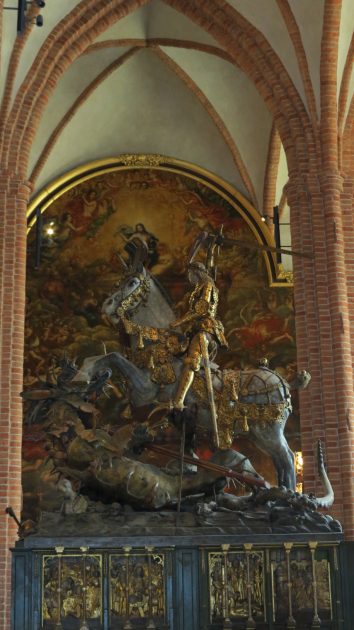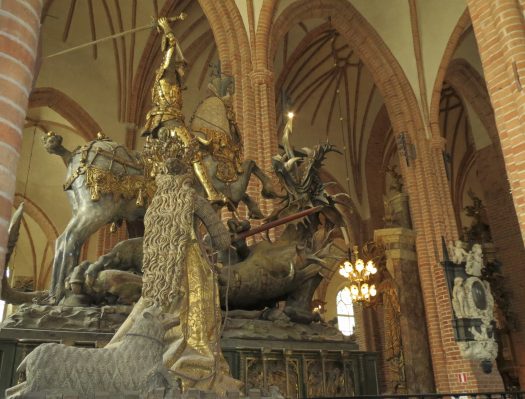- CountrySweden
- Town:Stockholm
-
Year of creation:1489
- Rider(s):Saint George
A lively description of this sculpture reads as follows:
The knight is a young man in golden armor. He has run his lance through the dragon and has now raised his sword to deliver the killing blow. Around his neck is a chain with a box containing sacred relics (including authentic bones from St. George) and a note from the consecration. His helm is laid on the ground before the figure group, whereas his shield has disappeared centuries ago. The knight can be detached from the horse – and maybe he used to be carried around in processions. The horse is rendered very realistically – and is richly decorated with motives from the bible. The dragon is lying on its back. Below are spread body parts from humans and lamb, while the dragon’s offspring are crawling among the rubble. The dragon is bisexual with male and female genitalia, symbolising that evil can multiply on its own. The dragon is defecating while being attacked. The dragon’s one foreleg is clutching the broken lance while the hind leg pushes the horse’s belly. In this way, the artist has stabilised the statue since the dragon’s leg carries the weight of the rearing horse with knight. The princess waits in her bridal veil, along with a lamb. If the knight loses the battle, she and the lamb will become the dragon’s next meal.
- Sculptor(s):Notke, Bernt
(c. 1440 –1509) was a late Gothic artist, working in the Baltic region. He has been described as one of the foremost artists of his time in northern Europe. As sculptor, painter, and engraver he was one of the most important artists in eastern Germany and the surrounding area during the 15th century. His intense and expressionistic works were instrumental in the development of sculpture in Germany.
-
To commemorate the victory at Brunkeberg, Sten Sture (see there) ordered a wooden monument for Storkyrkan in Stockholm, Saint George and the Dragon, built in the late 1480s. Saint George’s horse carries Sten Sture’s coat of arms, and the monument is therefore interpreted as a symbol of his victory over Denmark, the dragon. A bronze copy of the monument was placed on Köpmantorget in Stockholm in 1912.
